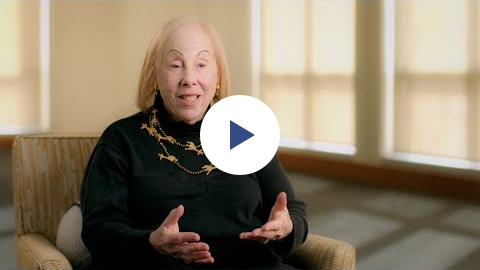Dialogic #340
Leadership, learning, innovation
Your Snapshot
A summary of the key insights from this issue
- Observability – making outcomes visible – is key to driving adoption of innovations. Seeing is believing.
- Leaders should demonstrate changes and share stories/data to spread ideas across organisations.
- Mapping ideas visually enables deeper collaboration and problem-solving. The process unlocks innovation.
|
|
#340 | November 3, 2023 | AI Image Tom x DALLE-3 |
The influential work of sociologist Everett Rogers and Harvard Business School professor Rosabeth Moss Kanter both underscore the power of observability in driving change and innovation.
👁 What has ‘observability’ got to do with innovation?
Observability refers to how visible the outcomes and benefits of a new idea, process or technology are within an organisation. When people can directly see the advantages, they become more inclined to adopt the innovation.
|
Rogers outlined in his seminal Diffusion of Innovations theory, observability accelerates adoption rates. The adage “seeing is believing” often proves true. Demonstrating clear results helps counter scepticism.
Kanter’s teachings reinforce this notion. She advocates that leaders focus on conveying the value of change to everyone through inspiring stories and progress updates. Communicating successes, even small wins, can spread innovative ideas across an organisation.
“Leaders must wake people out of inertia. They must get people excited about something they’ve never seen before, something that does not yet exist” ~ Rosabeth Moss Kanter
For example, when new technologies like smartphones emerged, people could immediately observe the benefits, fueling swift consumer adoption. Similarly, metrics shared by recycling programs help participants grasp the positive impact of their actions.
The implications for managing change are clear:
- Promote compelling stories that make the advantages relatable.
- Make outcomes and data transparent regularly to maintain momentum.
- Celebrate small victories early on to build engagement and accountability.
- Demonstrate innovations in visible ways so people can witness the benefits firsthand.
|
Leveraging observability paves the way for successfully diffusing new initiatives and ideas within any organisation or community. When the benefits are made observable, adoption spreads faster. Both Kanter and Rogers spotlighted this powerful effect.
In the next section I share some practical mapping ideas you can use to increase the visibility and observability of your ideas.
Mapping Ideas: A Catalyst for Creative Problem-Solving
Visualising ideas is a transformational practice in my creative work. Mapping thoughts in a shared physical space fosters deeper collaboration and problem-solving.
Here are some recommendations based on my experience:
- Set up a dedicated space for mapping ideas. This environment sparks visual, non-linear thinking.
- Externalise insights onto post-its, index cards, etc. Moving thoughts out of your head reveals patterns.
- Use diverse mapping techniques to structure information and provide unique lenses.
- Make mapping collaborative. Engage team members and outside voices for new perspectives.
- Reflect on the benefits: visible thinking, breaking down silos, improved planning.
- Share examples of how mapping catalysed solutions to complex design challenges.
- Start with one mapping activity, then gradually integrate mapping into your workflow.
Mapping enables groups to think together deeply, discuss openly, and drive innovation. This creative practice can unlock solutions to persistent problems.
⏭🎯 Your Next Steps
Commit to action and turn words into works
- Create a visible “results wall” to track progress and data on current projects. Make outcomes transparent.
- Identify a pilot innovation to showcase publicly. Demonstrate its benefits in action.
- Map your change plan on a wall with post-its. Externalise ideas to enable collaboration.
|
🗣💬 Your Talking Points
Lead a team dialogue with these provocations
- How might we make the advantages of our ideas more observable?
- What small win could we celebrate today to build momentum?
- Who are the skeptics who need to see proof before getting on board?
|
🕳🐇 Down the Rabbit Hole
Still curious? Explore some further readings from my archive
⟶ Professor Rosabeth M. Kanter: Narrative | Harvard Business School

Rosabeth Moss Kanter, the Ernest L. Arbuckle Professor of Business Administration, sees cases as stories whose narratives unfold from defining the problem to describing possible outcomes and ending with next steps. She uses three cases to illustrate this compelling narrative arc: “The Weather Company,” “Monique Leroux: Leading Change at Desjardins,” and “Haier: Incubating Entrepreneurs in a Chinese Giant.”
⟶ How to unlock design insights faster by mapping ideas: Examples and methods (Paywall possible) My article for UX Collective on Medium discusses how mapping ideas in a physical space can help unlock design insights faster. It argues that mapping externalises the thinking process, allows ideas to be manipulated and connected visually, and facilitates discussion.
⟶ Your Innovator’s Toolkit: Compatibility (edte.ch) In my post I explore the importance of another attribute identified by Rogers: Compatibility. It notes that innovations must be compatible with existing values, beliefs and practices of potential adopters in order to be adopted. Everett Rogers identified compatibility as a key attribute for innovations, along with relative advantage, complexity, trialability and observability. The article advises understanding community needs, listening to feedback, and engaging in design processes to improve an innovation’s compatibility.
|
|
|
|
Thanks for reading. Drop me a note with any Kind, Specific and Helpful feedback about this issue. I always enjoy hearing from readers.
~ Tom Barrett
|
Support this newsletter
Donate by leaving a tip
Encourage a colleague to subscribe
Tweet about this issue
The Bunurong people of the Kulin Nation are the Traditional Custodians of the land on which I write and create. I recognise their continuing connection and stewardship of lands, waters, communities and learning. I pay my respects to Indigenous Elders past, present and those who are emerging. Sovereignty has never been ceded. It always was and always will be Aboriginal land.
Unsubscribe | Update your profile | Mt Eliza, Melbourne, VIC 3930